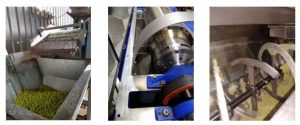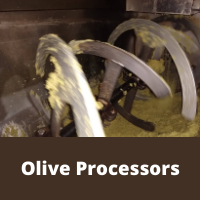
The AOA’s OliveCare® Code of Best Practice program is all about helping growers and producers do things better, smarter and for a more viable outcome. So when OliveCare® Administrator Peter McFarlane received this timely processing question from a program member, he wanted to share the answer with other levy payers.
- What grade talc do I use and in what situations?
“Just wondering who can I speak to about talc in processing – e.g. what grades or what types of talc are good talc and bad talc?
And are there different grades for different olives?”
McFarlane went to international olive processing specialist Pablo Canamasas for an expert answer:
- Pablo Canamasas
“The ideal situation is to purchase a food grade talc powder of median particle size (‘delta 50’) of < 5.0 microns.
The usage approach is always the same: regardless of the variety, we use talc when fruit moisture is higher than 56.0%.
There are some varieties where talc powder doesn’t have much of an impact, simply because those varieties tend to hold lower levels of moisture. These include Frantoio, Coratina and Koroneiki.
But if you’re processing Picual, Manzanilla (or any other table olive varieties), Arbequina, Hojiblanca, Leccino or Picholine then you’d better have talc at hand.”
Find out more
There’s more detail on the topic in the recent Processing Webinars run by Canamasas as part of the AOA’s productivity and profitability series. The second session – Technical aspects of EVOO making – included specific consideration of the use of talc and other processing aids.
If you’re a processor wanting to learn how to use talc, or a refresher as the season progresses, you can register to view these webinars on the OliveBiz website here.
Pablo has also reviewed and updated his 2011 industry technical report on the use of processing aids: Evaluation of Processing Aids for Olive Oil Extraction and Quality Improvement, RIRDC Publication 11-091, October 2011, Author(s): Pablo Canamasas, Leandro Ravetti.
Download the updated report here.


